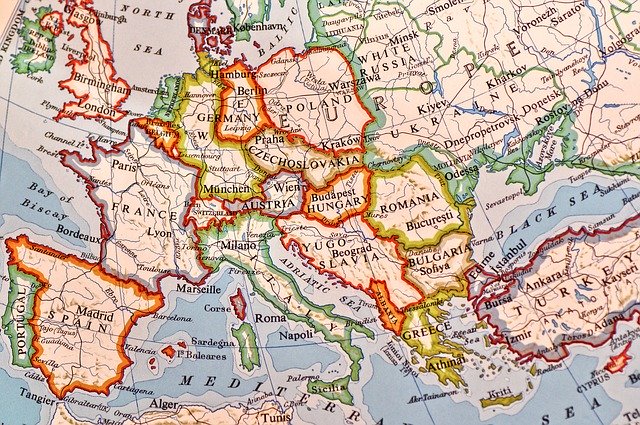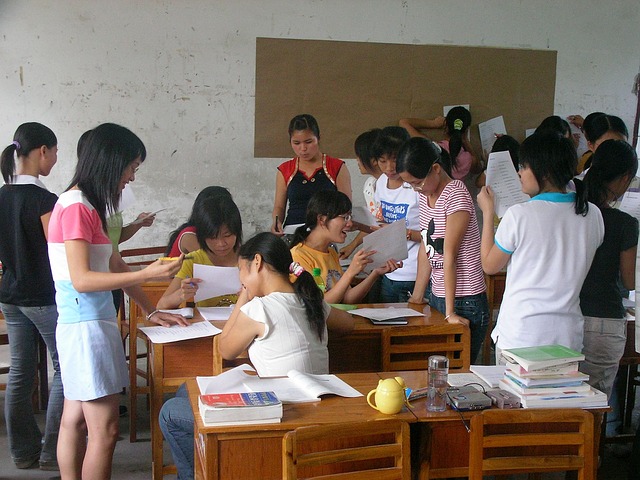
I can’t tell you how many times I've heard some version of the complaint, “This isn’t English class! Why are we writing?”
It might just sound like something unmotivated students would say, which is partially true. But it also reveals a bigger truth: our students aren’t writing enough outside of English class. My students were juniors and seniors! They should have been used to it by then.
My school district had a widespread push for writing across the curriculum. The director of social studies implemented two document-based question essays a year for all students in fourth grade and above. Other teachers balked at these initiatives, and at first, I did, too.
Literacy in America
As our principals provided more training sessions to help us reach English language learners and build language-rich classrooms, I began to hear a mantra.
“All of us are English teachers.”
No, I wasn’t. I specifically did not pursue a certification in English Language Arts because I didn’t want to teach reading and writing. I didn’t want to stress over the hardest standardized tests; I had enough of that in history!
But the longer I taught—and the more I implemented writing in my classroom—I realized I was wrong. We are all responsible for improving literacy.
The Program for the International Assessment of Adult Competencies (PIACC) does a widespread study of literacy every ten years, with updates to the data coming in more frequently. The most recent data come from 2014. The results are staggering.
More than 50% of American adults read and write at or below a fourth/fifth-grade level. A shocking 17% read and write at below a third-grade level. Only 13% of American adults can read and write at a high school level or higher.
Perhaps the most sobering statistic is that 4% do not have enough literacy to function in our society. If that seems low, think of it like this: in a room of 100 random people, four could not read and write well enough to perform basic tasks in our society.
So, yes, we are all English teachers. Social studies is a reading-heavy subject by nature, but many teachers gloss over writing. I understand that incorporating writing in your class can be overwhelming. Let me share some ideas on increasing the writing in your classroom.

Writing as an Assessment
There are a lot of reasons that teachers use multiple-choice tests. They’re easier to grade. It’s easy to compare data. And in the age of high-stakes testing, we have to get the kids prepared for that end-of-year exam.
But only using objective testing does not always give you a good idea of your students’ learning. Some kids are terrible test-takers. Some kids can guess their way through a multiple-choice test by knowing a few keywords. Often, the student may know the answer but get tripped up by the word choice of the question.
Writing tells you not just if they have learned the concept, but also to what degree. Did they forget the year of the Bay of Pigs, but they can describe the events that occurred? That’s pretty high mastery. Did they forget what yellow journalism is or the name of the USS Maine, but they can explain the role that the media played in the Spanish-American War? They’ve got it!
Add a few short-answer questions to your tests. It might take you longer to grade, but you’ll get a better idea of their comprehension.
Use writing as an exit ticket. You can provide a specific question to answer or use a template. I enjoy the 3-2-1 method.
- Write 3 things you learned
- Write 2 things you are confused about OR 2 things you found interesting
- Write 1 question you have
Reading your exit tickets won’t take you long. I used to glance through them for a general idea during passing periods. Sometimes I would immediately notice what I needed to clarify for the next class.
Writing to Learn
Most writing in the social studies classroom is either formative or summative assessment. But writing can also be used to learn and explore the material. Writing doesn’t have to be only factual. In fact, if you can get your kids personally invested in the content through writing, they will learn even better.
Opinion Questions and Observations
Start a lesson by asking a personal question that relates to the content. In the age of standardized tests, opinion questions can be difficult for students. They are used to having a right and wrong answer. Be patient, and respect what they say.
Here are a few ideas of the types of questions you can ask.
- You are moving to a new place far away, and you can only bring what fits in your backpack. What do you bring and why? (any lesson with human migration)
- What is something you think should be changed immediately in our society and why? Is it the government’s responsibility to make this change? (revolutions)
- You and 100 people have landed on a deserted island, and you’ve been selected as the leader. What are the first ten rules that you make? (Constitution, Bill of Rights)
- Write about a time that you visited someone’s house and noticed that they do things differently than your family. What did they do that was different? How did it make you feel? (culture, exploration)
We also use many primary sources in social studies. These are great tools for getting your students to write. Ask them to write down their observations in a photograph, painting, or political cartoon. You can provide accommodations based on the level of your students. For instance, lower-performing students can write three observations. The Five Ws (who, what, when, where, why) are great for most students. Advanced students can use AP strategies like APPARTS.
Be sure to include personal opinions and reactions in your primary source writing. If your students don’t know what is happening, have them make a hypothesis. Ask them what emotions the picture evokes. The more personally invested they are, the more they will learn.
Creative Writing
Many students think history is about names and dates, and they miss the idea that history is a story about real people. Creative writing can help bring history to life.
Letters and diary entries are a great way to personalize historical material. After they have a basic understanding of a subject, ask them to imagine they are living during that time. Focus on including sensory details and emotions instead of just facts.
Let’s take a look at a few guiding questions for writing a historical letter or diary entry.
- Who are you?
- What is happening in the world?
- What can you see? Smell? Hear?
- How do you feel and why do you feel that way?

Document-Based Questions
AP teachers are familiar with Document-Based Questions (DBQs). But DBQs aren’t just for advanced students. These essays are a great way to turn your students into historians.
A DBQ provides a selection of relevant primary and secondary sources that support an essay prompt. Using prior knowledge and the available documents, students write an essay. DBQs cover document analysis and teach students to synthesize information in a logical, concise manner.
DBQs might sound daunting, but thanks to The DBQ Project, you can adapt a DBQ for all grade levels and abilities. They provide both full-length DBQs and Mini-Qs. There are many lessons out there for how to teach a DBQ.
Modeling is very important, and methods like Gradual Release (I do, we do, you do) are highly effective for walking your students through the process.
Extra Tips for Teaching with Writing
One major concern teachers have about incorporating more writing is the grading workload. But you don’t need to add too much extra time to your grading process. You can have students share their writing out loud or check for completion while they work on other activities. Remember, you don’t need to take a grade on everything.
You are looking for comprehension more than correct mechanics. Encourage good spelling and grammar, but if you focus too heavily on it, the kids won’t write like you want them to. I only counted off for mechanics when I assigned essays like a DBQ. Even then, it was just worth a few points on the rubric. Don’t spend too much time correcting every mistake, and meet your students where they are. If you want to correct spelling and grammar, pick one or two repeated errors to address.
For English Language Learners or other students who require accommodations, provide sentence stems. Always encourage the use of complete sentences to increase literacy and fluency for all students.
How will you incorporate writing in your social studies classroom? Share your thoughts in the comment section below.

